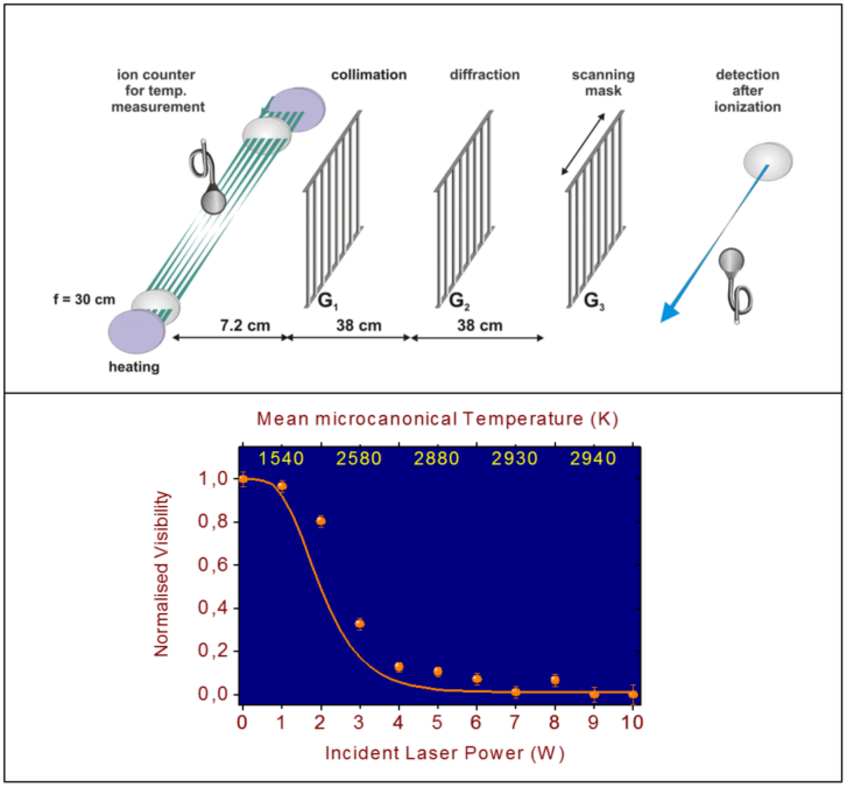Thermal decoherence
Emergent quantum technologies have led to an increasing interest in decoherence, processes that limit the appearance of quantum effects and turn them into classical phenomena. One important cause of decoherence is the interaction of a quantum system with its environment, which ‘entangles' the two and distributes the quantum coherence over so many degrees of freedom as to render it unobservable.
Decoherence theory has been complemented by experiments using matter waves coupled to external photons or molecules, and by investigations using coherent photon states, trapped ions and electron interferometers.
Large molecules are particularly suitable for the investigation of the quantum-classical transition because they can store much energy in numerous internal degrees of freedom; the internal energy can be converted into thermal radiation and thus induce decoherence. Here we report matter wave interferometer experiments in which C70 molecules lose their quantum behaviour by thermal emission of photons.
We find good quantitative agreement between our experimental observations and microscopic decoherence theory. Decoherence by emission of thermal radiation is a general mechanism that should be relevant to all macroscopic bodies.

Fullerene molecules were heated by multi-pass laser radiation to temperatures in excess of 3000 K. They cool on a fast time scale by the emission of thermal radiation, even more lilkely than by emission of electrons or even C2-molecule fragments. If this process occurs close to the second grating inside the interferometer, the emitted photons can provide which-path information. Additionally the random recoil adds to destroying the interference pattern.
References
- L. Hackermüller, K. Hornberger, B. Brezger, A. Zeilinger and M. Arndt
Decoherence of matter waves by thermal emission of radiation
NATURE 427, 711-714 (2004). - Klaus Hornberger, John E. Sipe, and Markus Arndt
Theory of decoherence in a matter wave interferometer
Physical Review A 70, 053608 (2004) - Klaus Hornberger, Lucia Hackermüller, and Markus Arndt
The influence of molecular temperature on matter wave interference
Physical Review A 71, 023601 (2005).
